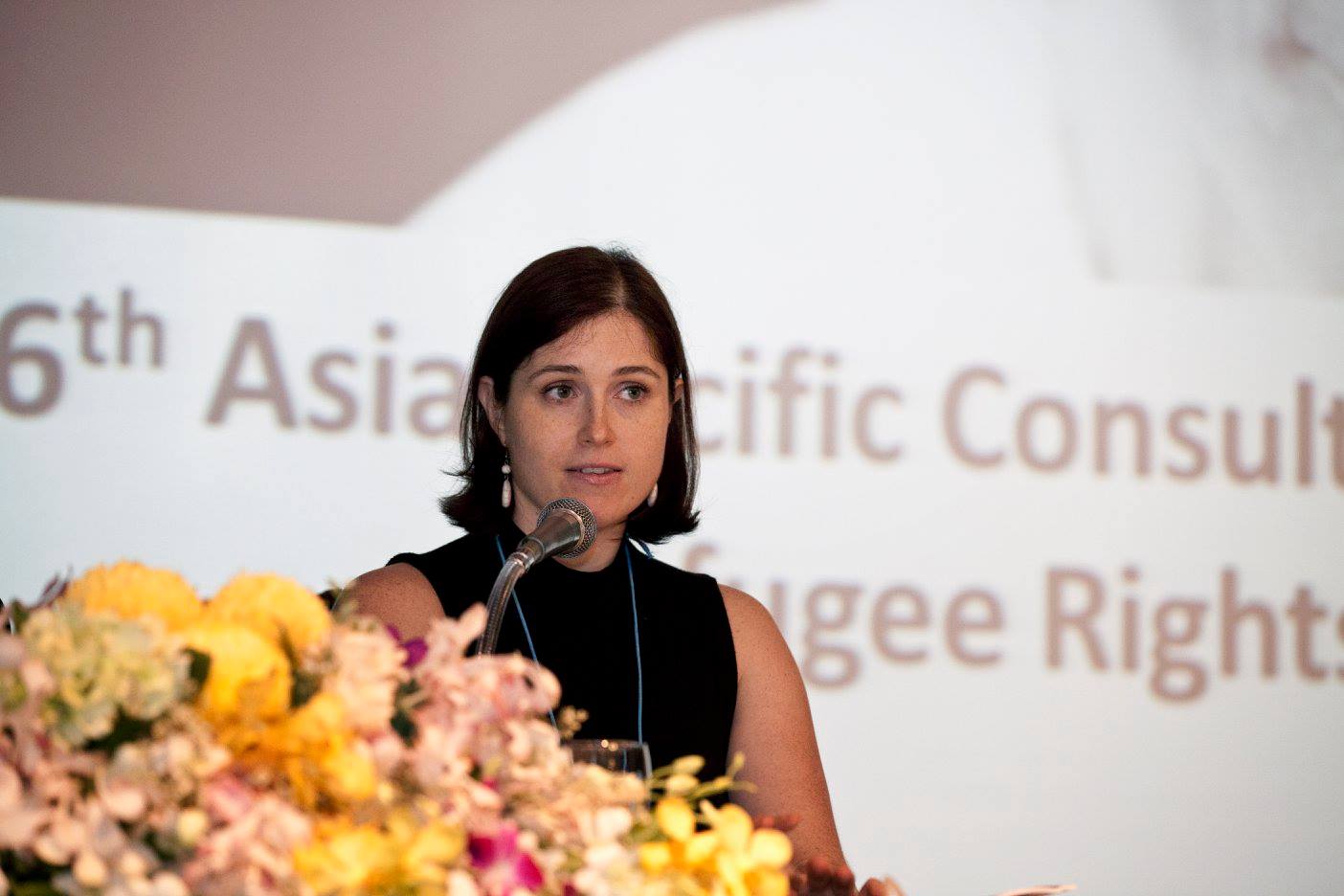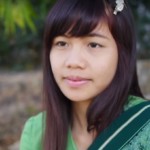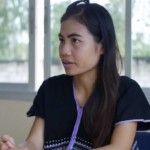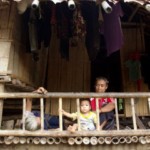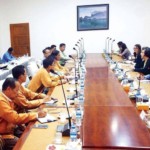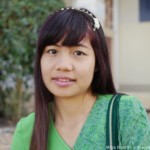Burma Link | June 23, 2017
Julia Mayerhofer joined the Asia Pacific Refugee Rights Network (APRRN) in 2011 and is currently the Secretary General. Julia’s passion and interest to work with refugees goes back ten years when she was volunteering on the Thailand-Burma border. This very personal experience inspired her to establish her own organization supporting scholarship programmes for refugee children on the border. Julia also worked with a refugee community centre in Hong Kong where she supported fundraising, project development and also community outreach. After Hong Kong she moved to Bangkok to join the APRRN Secretariat as the second paid full-time staff member. Since then she has been instrumental in advancing the work of the young Network and initiated several projects and activities. Julia is particularly keen on working with national NGOs, supporting them in their on-going initiatives but also exploring how their capacity could be strengthened to respond to the many protection challenges.
Julia is an Austrian national and has a BA in educational sciences and a MA degree in Development Studies. In addition she has participated in various trainings related to human rights and refugees. Julia also has a strong interest in social enterprises and won the Hong Kong Social Enterprise Challenge in 2011.
The following interview was conducted as part of the joint documentary “Unrecognised Leaders, Tomorrow’s Hope: Raising the Voices of Forgotten Youth” by Burma Link, Karen Student Network Group (KSNG) and Karen Youth Organisation (KYO), which was launched in a press conference in Rangoon on February 22, 2017, (Burmese version) and initially screened in Mae Sot on April 6 (English version). The 52-minute documentary amplifies the voices of displaced ethnic youth who live on the Thailand-Burma border, highlighting their calls for inclusion in political processes and recognition of refugee education certificates. The distribution and advocacy of the documentary has been supported by APRRN and Right to Play. Burma Link has been a member of APRRN since 2016.
- View the documentary on YouTube (English version)
- View the documentary on YouTube (Burmese version)
- Read the press release about Rangoon launch in English | Burmese
- View 4-minute advocacy video on YouTube (English subtitles)
This interview is the ninth one in a series that we have been publishing during the past weeks. This interview series is meant to give more in depth understanding into the situation of young ethnic refugees from Burma as well as refugee advocacy and Burma’s political situation. The text has been edited and some parts have been omitted for flow and clarity.
[/fusion_separator]About the Asia Pacific Refugee Rights Network (APRRN)
APRRN was founded back in 2008. We are a regional network that is comprised of over 300 members now, both organizations and individuals, who are spread in over 28 countries inside Asia-Pacific region and also outside the region. Geographically we cover quite a wide region ranging from Iran all the way to New Zealand. APRRN is working for the rights of refugees in the Asia-Pacific region and we do that through different activities and strategies, one of them being capacity strengthening and providing new skills, doing advocacy at the national, regional and international levels, and thirdly, networking and sharing resources and information.
[/fusion_separator]Principle of “Nothing about us without us”
When APRRN was founded, one of the things that we set out to do was this principle of “nothing about us without us.” It means that we really want to meaningfully involve refugees in the work that we do, and also give them space to be active in the network. I have to admit that in the first years, we had a lot of struggles with that, and being a regional network we had difficulties reaching out to communities and identifying people who were interested in participating in this network. I would say that over the last two years, we have increasingly started looking at that as a gap and see how to fill and address that gap.
[/fusion_separator]Value of youth voices in refugee rights advocacy
We see quite a lot of enthusiasm within refugee youth across the region and many of them really, really want to have their voices heard. They really want to participate in regional and international platforms but often do not have the access, so APRRN then becomes a kind of a platform for them to participate in initiatives that otherwise might be difficult. I think it’s quite powerful if people self-advocate for their own issues instead of having others advocate for them. Youth also understand the issues of their communities often really well, so I think that they can act as really powerful advocates in different platforms that could be national, regional, or international in New York and Geneva. Their voices have a lot of power and that is really the value that they bring to the discussions. Youth are quite mobilized, particularly with social media. They are very well-connected and innovative as well. And what I personally really like about working with youth is their passion and their commitment for the issues they are concerned about.
[/fusion_separator]Youth inclusion and advocacy
Refugee youth need to be included in political processes and advocacy because they know and they understand the challenges they experience the best, and they often also know the solutions and ways to address the challenges the best. As advocacy organisations, we have to explore how we can provide platforms, means and channels for affected communities to advocate for themselves, and how we can strengthen their capacity and skills in doing so instead of speaking on behalf of them.
Education and limited access to higher education opportunities is really something that has come up over and over again as the biggest gap for refugee youth, particularly in Asia, both in the urban centres and in the refugee camps. There are two other things that are always present, one of them being legal status and people feeling a sense of insecurity and lack of safety, because they might be undocumented and not have access to registration or any sort of protection. And the third one is participation and involvement; often youth feel like they are not really considered in the process, they are not really being engaged, they are not really being consulted with, so essentially not really having a voice in many of the processes.
[/fusion_separator]The APRRN Youth Working Group
The Youth Working Group goes back to an informal working group that has been up and running for about two years now. This informal youth working group was primarily set up because there was this global project called “Global Refugee Youth Consultations,” which involved refugee youth consultations around the world in different countries and APRRN was the Asia lead for this project. As part of this, we organized consultations in Pakistan with Afghan refugees and in Thailand, Bangkok, with the urban refugee community. We also had a few other activities such as producing a briefing paper and a video project compiling voices of refugee youth across the region. All of that led to the official formation of this youth working group. We see it as a really unique platform that is run by the youth themselves. It’s actually chaired by refugees or former refugees who have been resettled now. It’s really a group for refugees by refugees, and it looks at how we can connect refugee youth to each other in the region, how we can provide capacity strengthening initiatives that can help them take their work forward, and how youth can participate in advocacy activities.
[/fusion_separator]The APCRR6 in September 2016 in Bangkok
APCRR6 stands for the 6th Asia Pacific Consultation on Refugee Rights (APCRR6). This is a meeting that we organise about every two years now. APRRN was actually founded at the first Asia Pacific Consultation on Refugee Rights. We bring all our members together and we also invite other partners such as UN agencies, embassy representatives and other NGOs that might not be APRRN members. The APCRR6 is primarily for exchanging experiences and information but it is also a really fantastic networking opportunity as people are together for three days, learning from each other and making connections across countries, across borders; it is very powerful as well. Thirdly, APCRR6 is also an opportunity for us to revisit some of our strategies moving forward in the next two years, and what could be the activities that go hand in hand with those strategies to achieve the goals and objectives that we pursue for each of the working groups.
[/fusion_separator]Youth and the APCRR6
This year we really made an effort to identify refugee youth across the region that want to participate in this APCRR6. Some of them came from the countries where we held the global refugee youth consultations, but then we also tried to identify other countries and youth that were really interested in participating in the APCRR6. There was a session sharing some of the good practices and positive things that youth have done across the region, really highlighting some of the positive work, ranging from Pakistan to what is happening on the Thai-Myanmar
Involving youth from the Thailand-Burma border
The Thailand-Burma border has one of the major refugee situations in our region so therefore it really needs to be represented, and we focus on involving communities from the border. The reason why we really want to have the youth from the border present, was to have some input from them about what they want to see in the working group action plan, how APRRN can add value to the work that they are already doing and how to support them. We also wanted them to share what has been happening on the border, particularly around voluntary repatriation, which is one of our concerns as well. I think that our experience with them has been really great, and I would have loved to see more youth coming from the border, but it was constrained for two reasons; one of them funding, but also visa issues as not everybody has passports, valid visas and documents. This has been one of our obstacles in terms of facilitating access for everyone.
[/fusion_separator]Advocating for isolated populations
There are actually quite a few isolated refugee populations in the region, not only the refugees along the border here in Thailand, but in other countries as well. I think generally we have to look at how we can raise the voices of the people who cannot travel, and cannot participate in different activities. I think nowadays there are different ways to do that like collecting video testimonials or messages that can be quite powerful. I also think that identifying people who can travel, or who may have been resettled and have a lived experience of being a refugee, and who still maybe have connections to the country that they were a refugee in, can also be become a spokesperson for their community. In addition to that there’s a lot more that can be explored now with new technology, social media and multimedia to reach out and provide more platforms for isolated refugee communities across the region.
- View the documentary on YouTube (English version)
- View the documentary on YouTube (Burmese version)
- Read the press release about Rangoon launch in English | Burmese
- View 4-minute advocacy video on YouTube (English subtitles)
For more information and screenings, please visit the film’s website and follow the Facebook page.

